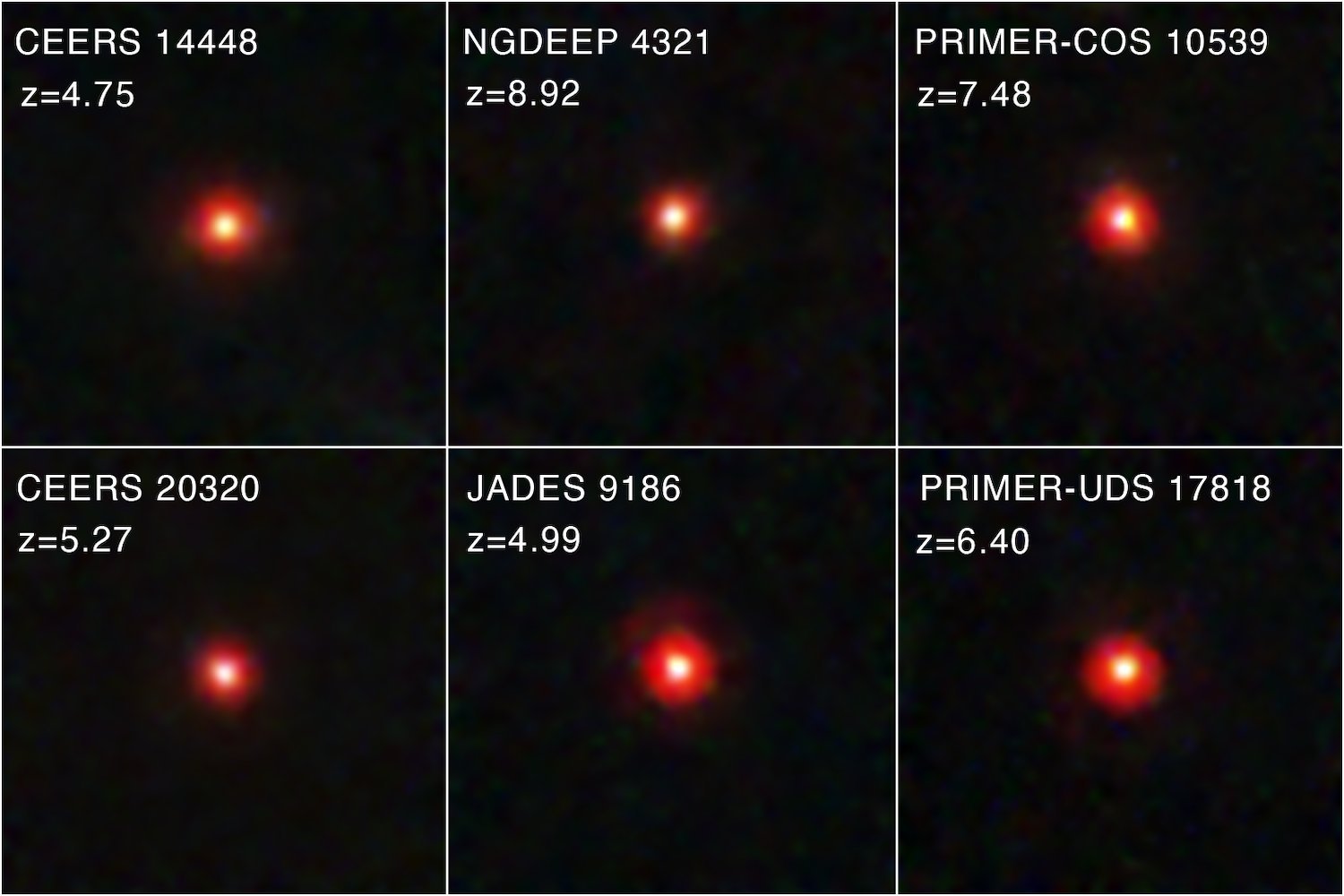Physical Address
304 North Cardinal St.
Dorchester Center, MA 02124
Physical Address
304 North Cardinal St.
Dorchester Center, MA 02124

After about a year of starting orbit around the sun, the James Web telescope began to photograph an abundance of small red points, which scientists, Umm, called “small red points”. I know – not only the very uninterrupted name, as it transmits the wrong impression of the importance. In fact, almost these small red points “broke” modern cosmology.
Astronomers have collected one of the largest investigative studies of small red points (LRDS) at all, and the theory that a large part of these mysterious space objects are galaxies with super black holes. Their results, presented during the meeting 245 of the American Astronomical Society in Maryland and accepted for future publication in Astronomical physical magazine“The problem of breaking the universe” can be solved.
“We are confused by this new population of the things that webb found. Del Kokifsky of Colibi College in Watfil, who led the study, said in a space of space telescope science,” We do not see a counterpart from them when the lower red displacement, and for this reason we did not see them before web. ” . statement.
Red displacement It occurs when the expansion of the universe extends light waves, which increases the lengths of their waves. This makes it look more red because it “turns” closer to the red part of the light spectrum. This is partly why the small red points – they guess -. Basically, the lower red shifts correspond to closer distances in space.
“There is a great deal of work that is done to try to determine the nature of these small red points and whether its light dominates the accumulation (growth through the accumulation of material) black holes.” Kocevski and his team’s research were published in September Preprint article On Arxiv.
Almost all LRDS in its poll was present during the first 1.5 billion years in the universe. How do we know about the things that have been present in billions of years? This is because the light takes time to travel. When we notice heavenly bodies, we see them not as they are today, but as they were when their light began for the first time his journey to Earth. For example, it takes eight minutes and twenty seconds to Sunlight for travel To our planet. This means that we see the sun because it was eight minutes and twenty seconds. The same applies to things away from us. In fact, the more far they are, the higher the red displacement, the more “time return” that we can see.
Don’t worry, there will be no test in the end.
The team’s research indicated that a large part of the LRD concerned was between 600 million and 1.5 billion years of the Big Bang. They also found evidence that many of them were around the gas traveling about 2 million miles per hour (about 3.2 million kilometers per hour). Based on this guide, the researchers note that LRDS can be an active galaxy nuclei (AGN): very luminous and growing black holes.
“The most exciting thing for me is the red displacement distributions. Stephen Venkelstein from the University of Texas in Austin, who also participated in the research, said:” These high red sources really stop mainly at a certain point after the big explosion. ” We believe that at least 70 percent of them are, these are hints in the era of the mysterious black hole growth in the early universe. “
It would “reform” cosmic science that “broke” JWST when it was first identified LRDS. The possibility of stars emanating from this type of light in this context contradicts largely acceptable cosmic theories, which led some scientists to suggest that cosmology is “broken”. The light emitted from AGNS, however, fits these theories.
“This is how the problem of breaking the universe is solved,” said Anthony Taylor of the University of Texas in Austin, a co -author of the next study.
Although the problem of breaking the universe may be solved, many questions about LRDS remain.
“There are always two or more ways to explain the confusing properties of small red points,” said Cookvsky. “It is a continuous exchange between models and notes, and finding a balance between what is well compatible between the two and the conflicts.”
Ultimately, waking up from the study: Do not judge an astronomical phenomenon in its name, and even problems in breaking the universe can be finally fixed.